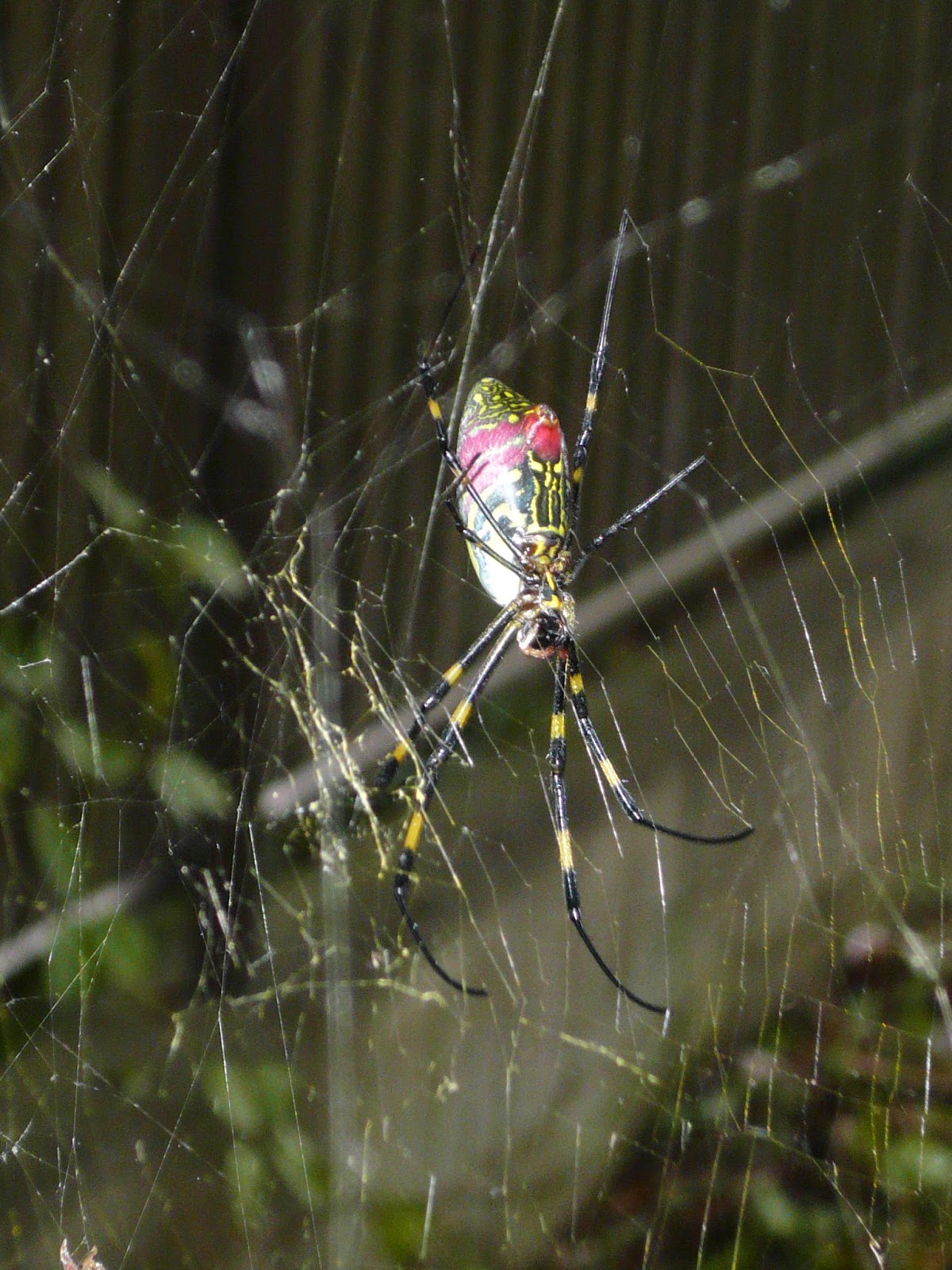仲秋, Chuju: "Mid-Autumn"
Season No. 15: 白露, Hakuro
"White Dew"
 |
| A fearless wagtail in parental mode staring me down (Fujishiro, Ibaraki, 2005). |
Climate No. 44: 鶺鴒鳴
Sekirei Naku
"Wagtails Sing"
(September 12 -September 16)
 |
| A wagtail searches for material to build a nest in my kitchen fan vent (Hikone, Shiga, 2011). |
I love these birds! I can't help but fly open my windows and let the sound flood in when they start serenading me from an adjacent rooftop. My smartphone audio recorder is literally bursting this month with file after file of wagtail clips! Capable of different melodies from high-pitched peeps and whistles to heartwarming trills, these endearing, gabby little birds with bobbing butts compete to sing the sun down as if auditioning for "Japan's Got Talent."
During the day, wagtails (鶺鴒, sekirei) skittle on lightning-speed legs across parking lots and driveways, oblivious to the dangers of the human world, scouring the asphalt for food and fun. Playing hide-and-seek with their mates between parked cars and river rocks, wagtails have a sense of humor! On several occasions, they've even approached me in curiosity, just standing there cocking their cute 8-ball heads, checking me out. The unpredictable behavior of the sekirei has helped me understand that there's much more sentience in the bird world than we give them credit for.
 |
| Three tenors (wagtail chicks) warming up their pipes (Fujishiro, Ibaraki, 2005). |
Flower Of The Season: 鶏頭, Keitou, Cockscomb (Celosia)
 |
| A fuzzy Celosia cristata (Shobara, Hiroshima, 2014). |
"Cockscombs-
With geese arriving,
Now deeper crimson." -Matsuo Basho
 |
| Pretty plumes of Celosia plumosa (Shobara, Hiroshima, 2014). |
Critters Of The Season: 黄金蜘蛛科の蜘蛛, Orb-Web Spiders
No discussion about the garden paradise that is Japan would be complete without mention of its highly-regarded caretakers: the spiders. Now that the surrounding vegetation is half withered, the master weaver orb-web spiders grow ever more conspicuous, dangling above and below, waiting for fresh kill. Listed are two species that I see on a daily basis:
The wasp spider (Argiope bruennichii) prefers to spin its snares waist-high (or lower) where the crickets and locusts jump, while the poisonous jorou spider (Nephila clevata) weaves shimmering golden webs between trees and shrubs (preferably in the canopy immediately overhead) to snag the big prey like dragonflies and beetles. Their intimidating size and alarming color patterns command respect, though neither species are considered lethal to humans.
長黄金蜘蛛, Nagakoganegumo, Wasp Spider (Argiope bruennichii)
 |
| A gigantic Argiope bruennichii (Tone, Ibaraki, 2005 ) |
女郎蜘蛛, Jorougumo, Jorou Spider (Nephila clavata)
 |
| A well-fed Nephila clavata rests on her web of legendary golden silk (Mashiko, Tochigi, 2009). |
Copyright 2014 Genkilee, Gen. All rights reserved. No part of this blog (written or photo content) may be reproduced or reprinted without the expressed permission of the author.
No comments:
Post a Comment